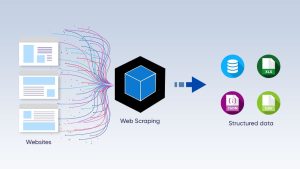Web scraping can be a digital scavenger hunt. Yet, lurking in this intricate game is the gatekeeper: Proxy management. If web scraping were a rock concert, proxies would be the backstage pass. Dive into this lively tango of code and data, and you’ll discover its complexities.

You’re surfing the net, trying to get a treasure map of data. But, BOOM! Blocked. Those websites sniffed you out like a bloodhound. Enter proxies, the caped superheroes that cloak your identity. Without proxies, you’re basically a sitting duck in a shooting range.
But hold your horses! You can’t just have any proxy. Picking a proxy is like choosing the right wand in a wizardry shop. Or maybe not. Some days it feels like juggling flaming swords while riding a unicycle.
And once you’ve got your trusty proxy? The game’s far from over. Think of it like this: you’re at a buffet, and every person (or web page) only lets you take so much food before they say, “Whoa, easy now!” You’ve got to switch between different plates or, in this case, proxies. Random rotations keep things fresh, like a DJ changing tracks before the song gets stale.
A twist in this tale comes with the infamous captcha. Ugh, those pesky “I am not a robot” checkpoints! It’s like the internet version of a bouncer. But with a proxy, you’re in disguise. You’re the data spy. Mission: gather value without setting off alarms.
Now, imagine having a whole toolbox of different kinds: residential, datacenter, mobile. Each has unique perks and quirks. It’s like picking between a sports car, a family van, or a bicycle. Decisions, decisions. The debate goes on among developers and data gatherers alike. Some choose speed, others favor anonymity.